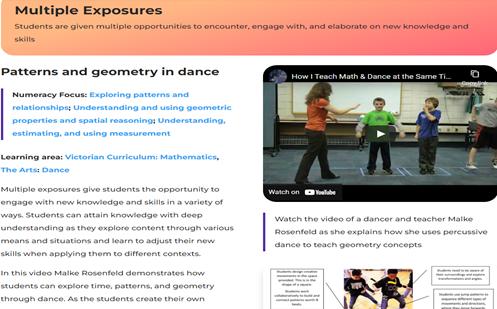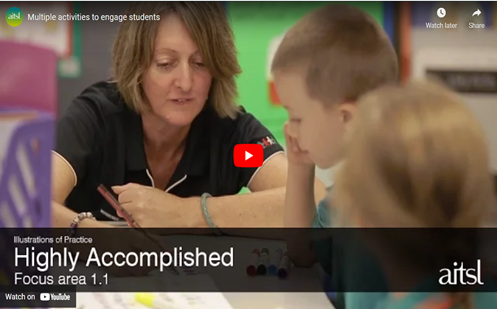Multiple exposures
Overview
Providing students with multiple opportunities within different contexts to practise skills and apply concepts allows them to consolidate and deepen their understanding. If these multiple exposures take place across different subject areas, this also facilitates students’ knowledge transfer.
Making the links between different topics explicit and often referring back to previous learning are ways that students can experience multiple exposures. When planning it is important to consider how you will provide various contexts and occasions for students, spaced over time, to work on similar concepts and skills.
By giving feedback to students after each exposure focusing on how improvements can be made, each new experience should build the student’s capabilities and results.
The teacher:
- makes explicit links to previous learning in the same and other subject areas
- provides multiple activities, spaced over time, to practise skills and apply concepts in different contexts, increasing in complexity
- uses a variety of methods for assessment
- offers students constructive and timely feedback so that students know what they need to do to move forward.
The students:
- engage in a variety of activities to practise skills and apply knowledge in different contexts over time
- consolidate and build on previous knowledge and skills.
Examples of the strategy in action

Patterns and geometry in dance
In this resource, teacher Malke Rosenfeld explains how she uses percussive dance to teach geometry concepts. The resource demonstrates ways students are given multiple opportunities to encounter, engage with, and elaborate on new knowledge and skills.

Multiple activities to engage students
In this video, a teacher shows how they create multiple opportunities for students to work on a particular concept.
